Travel to Paris
Day 2 Paris - Versailles - Paris
Versailles: This palace is large because Louis XIV forced to the court and nobles to live with him in a subordinate position by preventing further uprisings of the nobility. The first reform was undertaken by Le Vau, and involved the beautification of the courtyard and the construction of new pavilions and stables for guests and kitchens. The second expansion was more important (it was decided to retain the original palace, the courtyard of marble), making a kind of wrapping it into the gardens. The third and last extension was entrusted to JA Mansard. This was the largest of all and meant to triple the area of the palace through the construction of two side wings, and the redecoration of the facade above the park built. The result was a palace with a length of almost 500 meters.
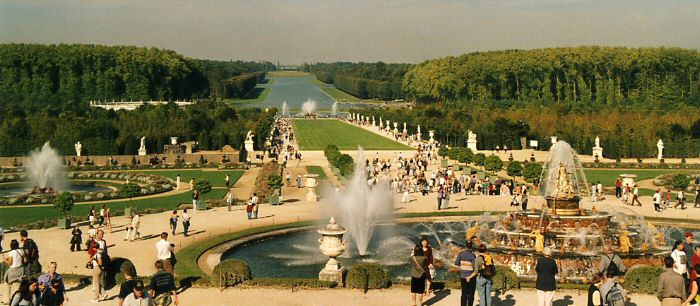
Versailles - Gardens and Grand Canal
Its original decoration was carried out by Le Brun, whose masterpiece is the Hall of Mirrors, 73 × 13 meters, escorted by two rooms, the hall of the war and the hall of peace. The rooms are the most important state placements, each dedicated to a planet and its corresponding divinity of antiquity, especially those of Venus, Diana and Hercules decorated with polychrome marbles. The rest are decorated with velvet crimson and green color. Among them, the hall of Apollo was originally the bedroom of the king to become later in the throne room. They still stay the original decoration of the first season of the palace.
One of the lost masterpieces is the ladder of ambassadors that fell into disrepair and was replaced by another of little interest. Queen´s chambers are as were left by Marie Antoinette, highlighting the ladder of the Queen, that retains the original decoration created by Le Brun in the eighteenth century.
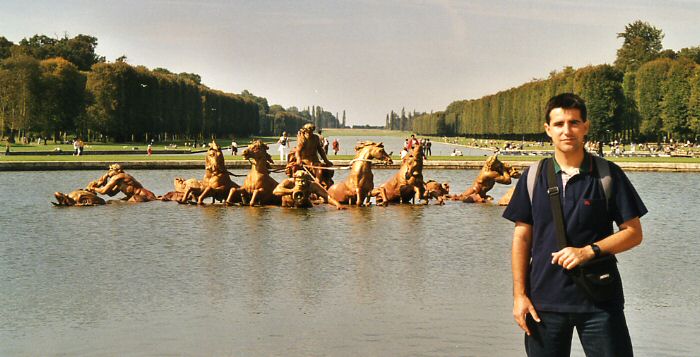
Versailles - Bassin d´Apollon
The chambers of the king on the ground floor are a marvel of fine decorative as they are decorated with exquisite polychrome boisieres such as the library or the interior of the cabinet of the queen. On the north lateral side stress the palatine chapel and the opera. In the south wing, in the nineteenth century, King Louis Philippe construct Gallery battles, which provides an overview of the history of France through a variety of artists.
The gardens of Versailles are the work of Le Nôtre. Are plenty of fountains such as the Bassin de Latone (Latona Fountain), the colonnade and the Bassin d´Apollon. In the last one stresses in the center the solar chariot, which represents Apollo at the time of leaving the ocean driving the chariot to light the earth. There are two pavilions of special beauty, the grand Trianon and Petit Trianon, built by Louis XIV and Louis XV to their favorites.

Versailles - Marble Courtyard
The Musée d´Orsay (Orsay museum), Opened in 1986, is located in an old railway station. The museum Houses post-impressionist painting, sculpture, decorative arts, photography, film and architecture. The paintings which houses covers the period between 1848 and 1914. Most notable is the collection of Impressionist works, paintings by Renoir, Manet, Monet, Pisarro, Berta Morisott, Degas, and others. The collection of sculptures covers the period from 1850 to 1870.
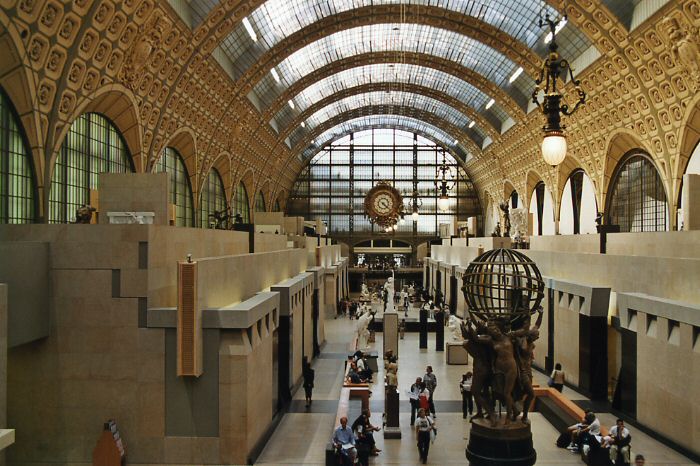
Paris - Musée d´Orsay (Orsay museum)
The Hôtel des Invalides, founded by Louis XIV as a military hospital, aesthetically notable for its golden dome, which is visible from almost all points of Paris. On the south side of the building is the church of the Dôme, where are the remains of Napoleon.
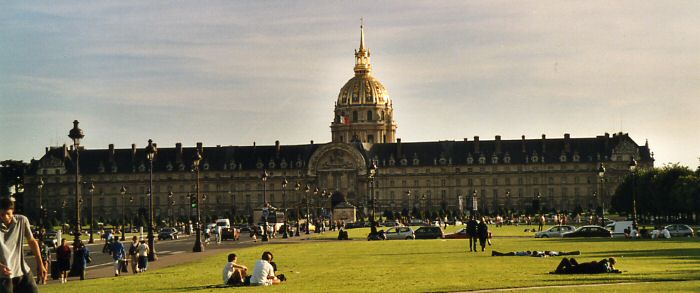
Paris - Hôtel des Invalides
Visited annually by more than 6 million visitors, the Eiffel Tower is the icon of Paris. On March 31, 1889 was opened and was designed to disarm the metal in 1900, after the Universal Exhibition. Fortunately the French army came to do some tests with radio equipment at the top of the tower, discovering a use for the Eiffel Tower for which had not been built. At present there are several antennas that crown the Eiffel Tower, and his presence has raised the height of 312.27 meters that measured in 1889 to the current 324 meters. It is very typical to go to the top of the tower: You can use the stairs (1665 steps) or by various lifts.
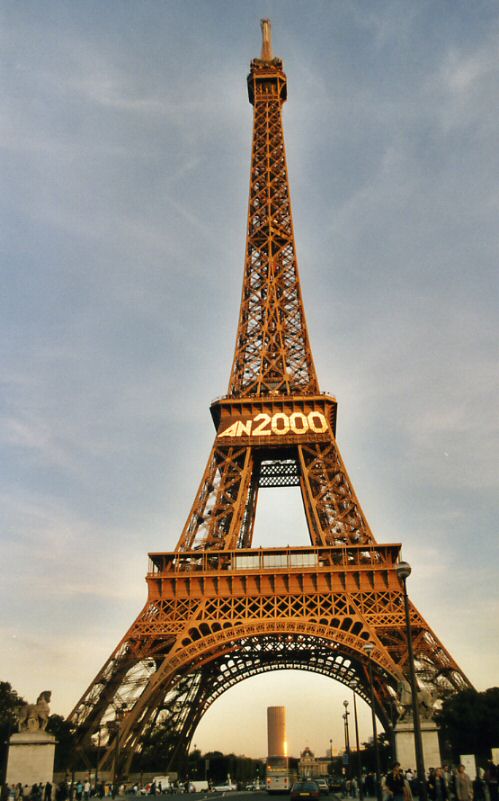
Paris - Eiffel tower
The Latin Quarter of Paris (Quartier latin), located near Notre Dame on the left bank of the River Seine, is one of the most lively, especially at sunset. It is formed by a serie of small streets and alleys where there is only bars and restaurants of all the places over the world, where you can find within a few meters several Greek, Italian, Chinese or Japanese restaurants, and Irish pubs near Parisian pubs with the most typical fashion style.